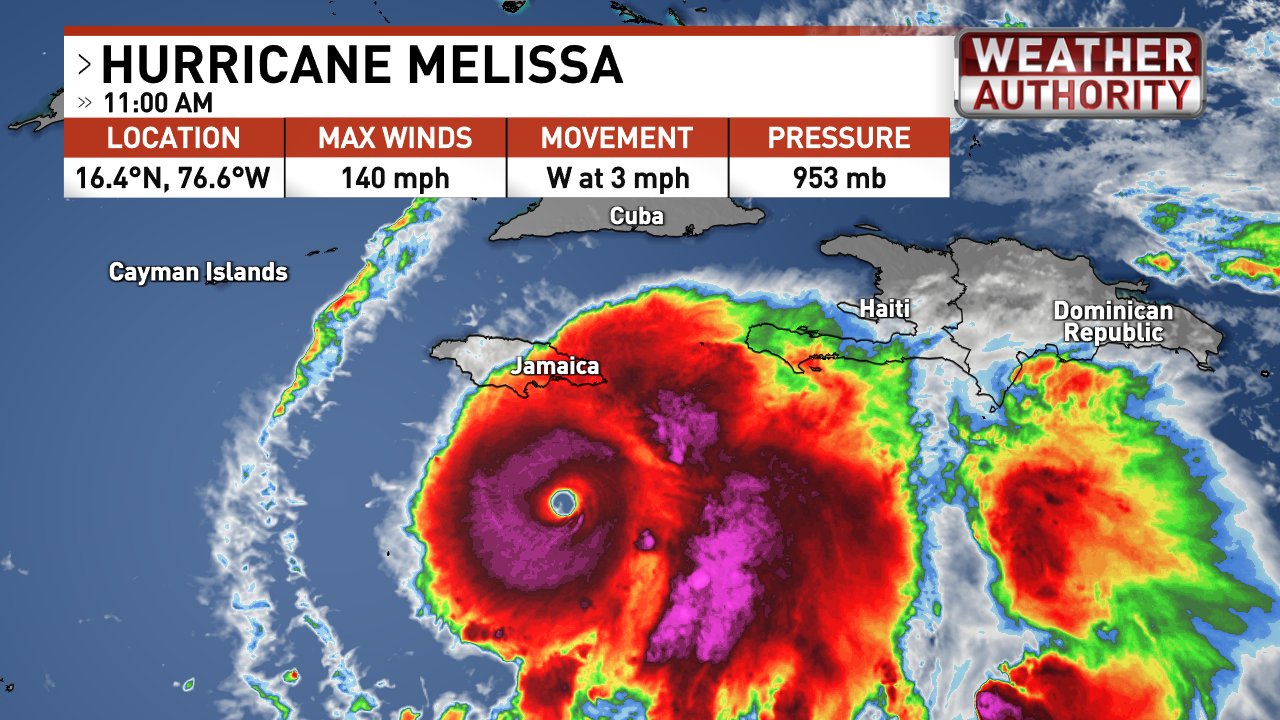Hurricane Melissa and How to Help Jamaica and the Caribbean
As the 2025 Atlantic hurricane season barrels toward its climax, Hurricane Melissa has emerged as one of the most terrifying storms in recent memory. What began as a modest tropical wave in mid-October has exploded into a Category 5 behemoth, packing winds of up to 165 mph and poised to unleash devastation across the Caribbean. With its slow, erratic movement over extraordinarily warm waters, Melissa is not just a wind machine—it’s a flooding catastrophe in the making, threatening Jamaica, Haiti, Cuba, and the Dominican Republic with considerable rains, landslides, and storm surges. As of this morning, the storm’s center lurks about 100 miles southwest of Kingston, Jamaica, and landfall is predicted to come early Tuesday.
From Humble Beginnings to Rapid Fury
Hurricane Melissa’s story is one of nature’s raw power unchecked. The National Hurricane Center (NHC) first flagged a westward-moving tropical wave on October 16, 2025, off the African coast. By October 21, it had coalesced into a tropical depression, earning the name Melissa as the season’s 13th named storm. Initial forecasts painted a picture of a sluggish system hampered by wind shear, meandering aimlessly through the central Caribbean.
But then came the intensification. On October 23, weakening shear allowed Melissa’s convection to align, and the storm turned northward, feeding voraciously on sea surface temperatures exceeding 85°F. What followed was “extreme rapid intensification,” per NHC meteorologists: from a disorganized tropical storm to a Category 4 hurricane in under 24 hours on October 25-26. By early Monday, October 27, satellite imagery revealed a pristine eye surrounded by a symmetric ring of towering thunderstorms, cementing its status as a Category 5—the fourth major hurricane of the season.
Melissa’s maximum sustained winds now rival those of Hurricane Ian in 2022, but her slow pace—barely 5 mph—amplifies the potential absolute devastation. “This extreme rainfall potential, owing to the slow motion, is going to create a catastrophic event,” warned Jamie Rhome, NHC deputy director. Forecasts call for 20-30 inches of rain across Jamaica and Haiti, with isolated totals surpassing 40 inches—enough to overwhelm rivers, trigger deadly landslides, and submerge coastal communities under 10-foot storm surges.
A Trail of Early Tragedy
Melissa’s wrath has already drawn blood. Even before reaching major status, her expansive rainbands lashed Hispaniola, causing flash floods that claimed at least five lives in Haiti and the Dominican Republic, with one person still missing as of October 24. In Haiti, fragile infrastructure in the south crumbled under the deluge, displacing hundreds and stranding others in remote villages. The Dominican Republic issued flash flood warnings, closing schools and evacuating low-lying areas.
Across the region, precursor alerts rippled outward. Martinique raised a yellow alert on October 18, Barbados issued flash flood warnings the same day, and Curaçao shuttered schools to bolster emergency response. Cruise lines like Margaritaville at Sea rerouted itineraries, skipping Jamaica and Grand Cayman for safer ports in Belize and Honduras.
Jamaica on the Brink: Preparing for the Unthinkable
No place faces Melissa’s full fury like Jamaica. The island, with a population of 2.8 million and a history scarred by hurricanes like Gilbert in 1988, is bracing for what could be the strongest storm to ever strike its shores. Hurricane watches escalated to warnings on October 23-24, covering the entire nation. In Kingston, the capital, mandatory evacuations have cleared flood-prone neighborhoods, while residents like retired fisherman Douglas Butler in Port Royal stockpile water in barrels and board up homes against howling winds.
“The time for preparation is all but over,” declared Matthew Samuda, Jamaica’s Minister of Water and Environment, in a somber press conference. Airports, including Norman Manley International, have shuttered, stranding travelers and halting aid flights. At Hellshire Beach, palm trees whip in precursor gusts as locals fortify food trucks and sand-side structures. The U.S. Navy, anticipating the worst, evacuated 1,000 nonessential personnel, families, and pets from Naval Station Guantanamo Bay in southeastern Cuba.
Cuba, too, lies in Melissa’s crosshairs, with hurricane warnings for the southeast, including Guantanamo. Haiti and the Dominican Republic, still reeling from outer-band floods, face renewed threats of “life-threatening” surges and slides. The Bahamas could see hurricane-strength remnants by midweek as Melissa churns northward, her intensity expected to fluctuate but remain formidable.
How You Can Help: Donate to These Relief Organizations
As Melissa bears down, the road to recovery will be long and arduous. Immediate needs include emergency shelter, clean water, medical supplies, and rebuilding efforts. Here are three reputable organizations actively mobilizing aid for Caribbean hurricane victims—your support can make a real difference:
1. Food for the Poor – Donate
2. Global Empowerment Mission – Learn more
3. Mustard Seed Communities – Learn more
As Melissa roars ashore, our thoughts are with the resilient people of the Caribbean. Stay safe, stay informed via official channels like the NHC, and if you’re in the path—hunker down. The storm will pass, but rebuilding depends upon all of us.
